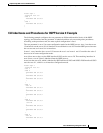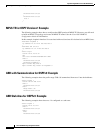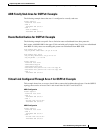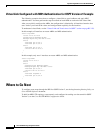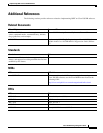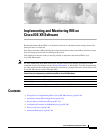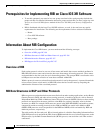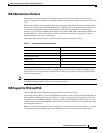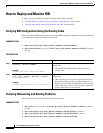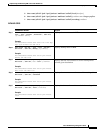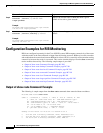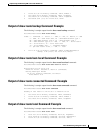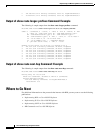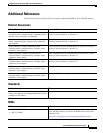
Implementing and Monitoring RIB on Cisco IOS XR Software
Information About RIB Configuration
RC-197
Cisco IOS XR Routing Configuration Guide
RIB Administrative Distance
Forwarding is done based on the longest prefix match. If you are forwarding a packet destined to
10.0.2.1, you prefer 10.0.2.0/24 over 10.0.0.0/16 because the mask /24 is longer (and more specific) than
a /16.
Routes from different protocols that have the same prefix and length are chosen based on administrative
distance. For instance, the Open Shortest Path First (OSPF) protocol has an administrative distance of
110, and the Intermediate System-to-Intermediate System (IS-IS) protocol has an administrative
distance of 115. If IS-IS and OSPF both download 10.0.1.0/24 to RIB, RIB would prefer the OSPF route
because OSPF has a lower administrative distance. Administrative distance is used only to choose
between multiple routes of the same length.
The default administrative distances for the common protocols are shown in Table 2.
The administrative distance for some routing protocols (for instance IS-IS, OSPF, and BGP) can be
changed. See the protocol-specific documentation for the proper method to change the administrative
distance of that protocol.
Note Changing the administrative distance of a protocol on some but not all routers can lead to routing loops
and other undesirable behavior. Doing so is not recommended.
RIB Support for IPv4 and IPv6
In Cisco IOS XR software, RIB tables support multicast and unicast routing.
The default routing table for Cisco IOS XR RIB are the unicast and the multicast-unicast RIB tables for
IPv4 and IPv6 routing, respectively. For multicast routing, routing protocols insert unicast routes into
the multicast-unicast RIB table. Multicast protocols then use the information to build multicast routes
(which in turn are stored in the MRIB). See the multicast documentation for more information on using
and configuring multicast.
RIB processes ipv4_rib and ipv6_rib run on the RP card. If process placement functionality is available
and supported by multiple RPs in the router, RIB processes can be placed on any available node.
Table 2 Default Administrative Distances
Protocol Administrative Distance Default
Connected or local routes 0
Static routes 1
External BGP routes 20
OSPF routes 110
IS-IS routes 115
Internal BGP routes 200



